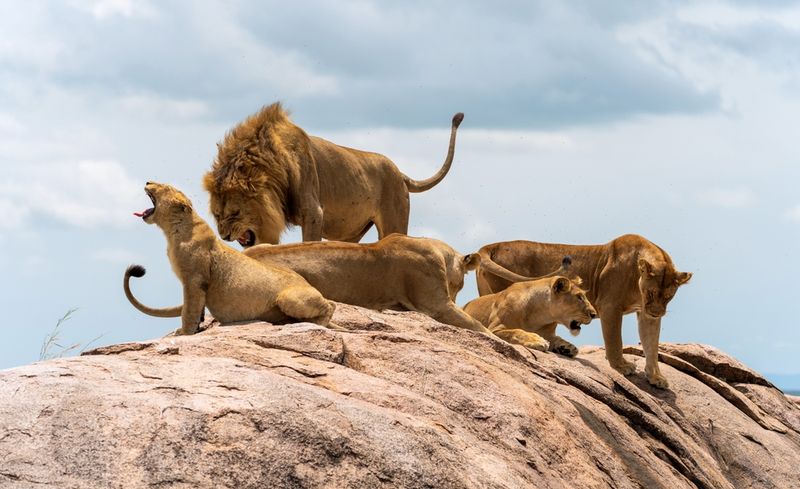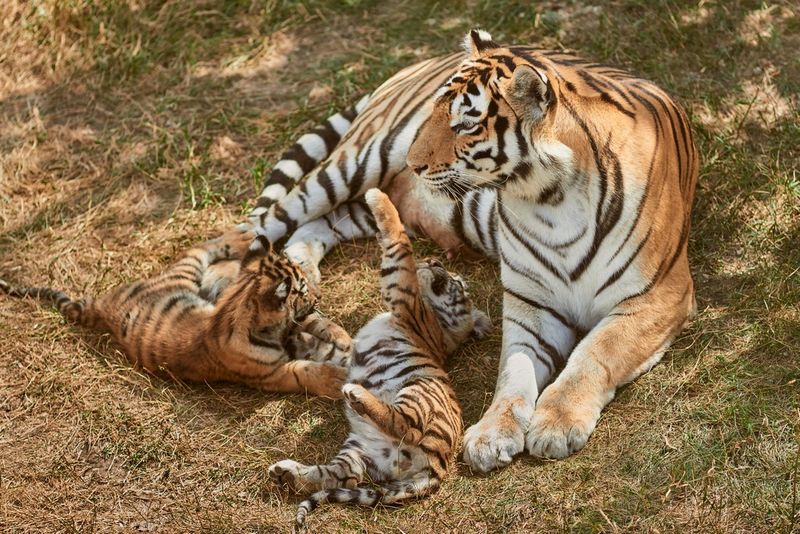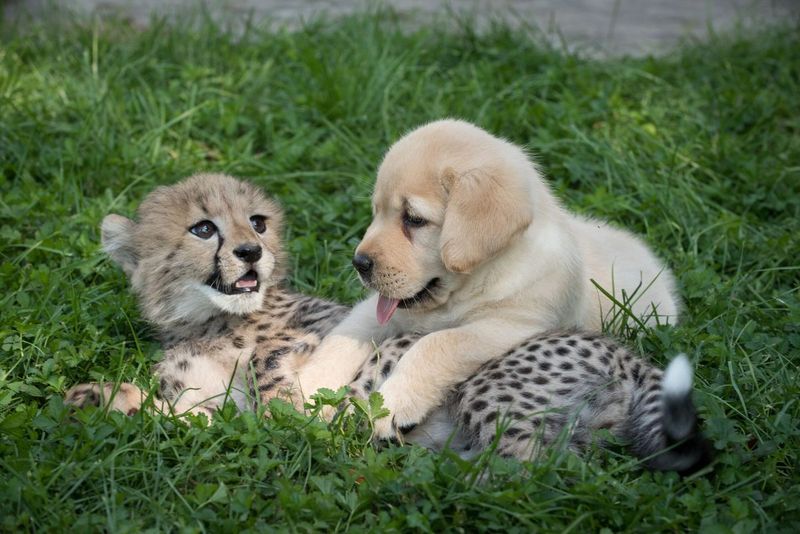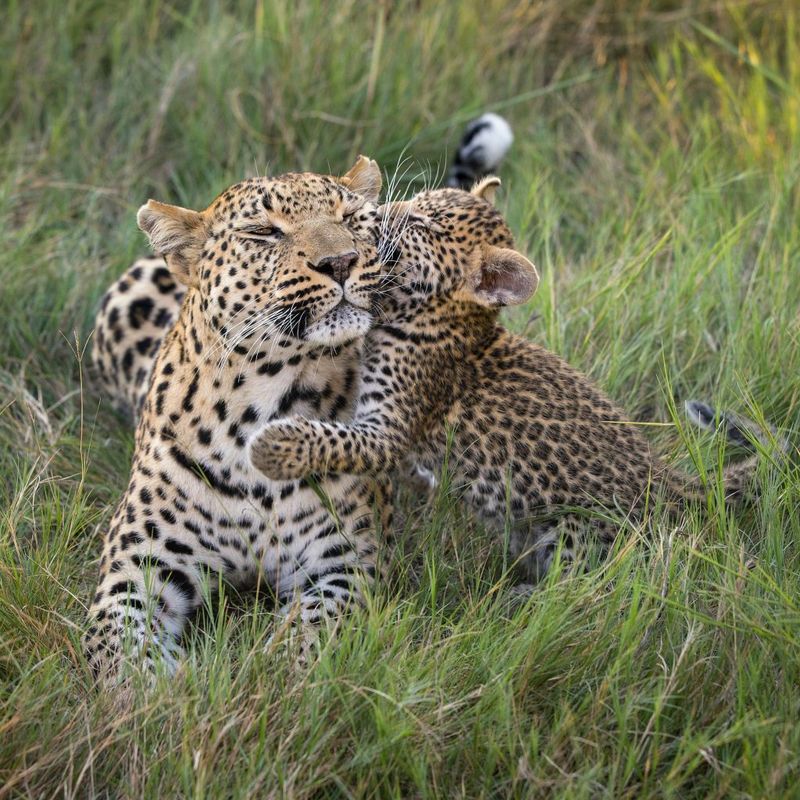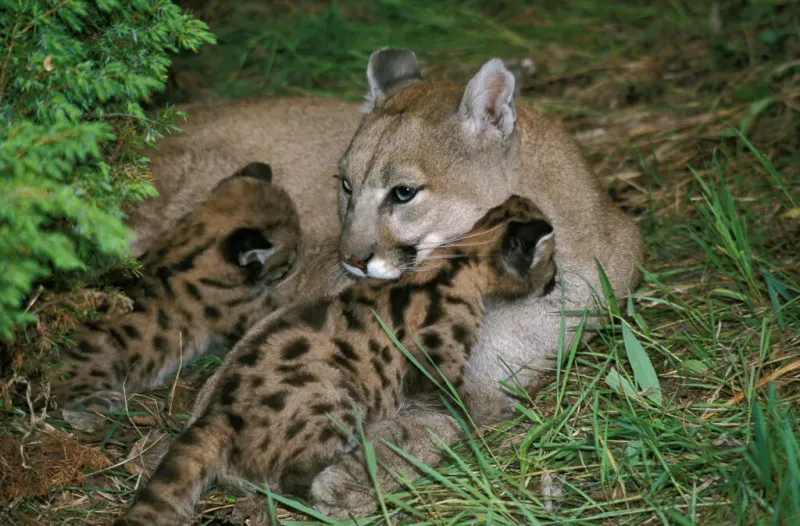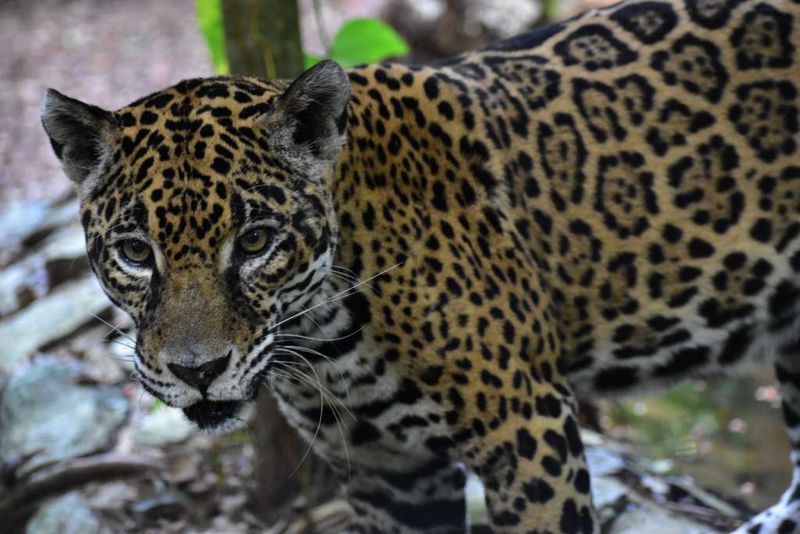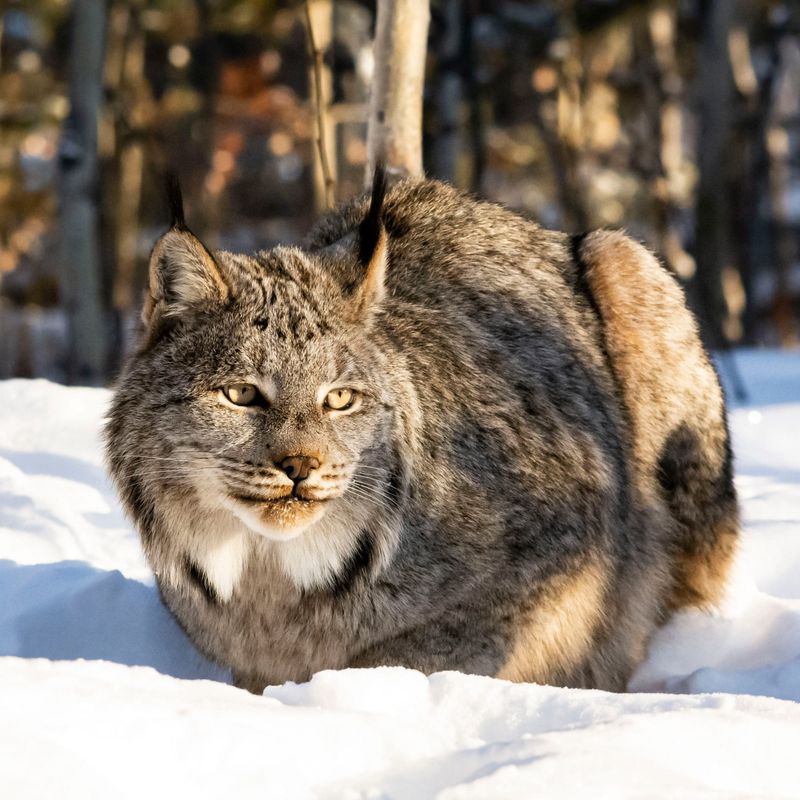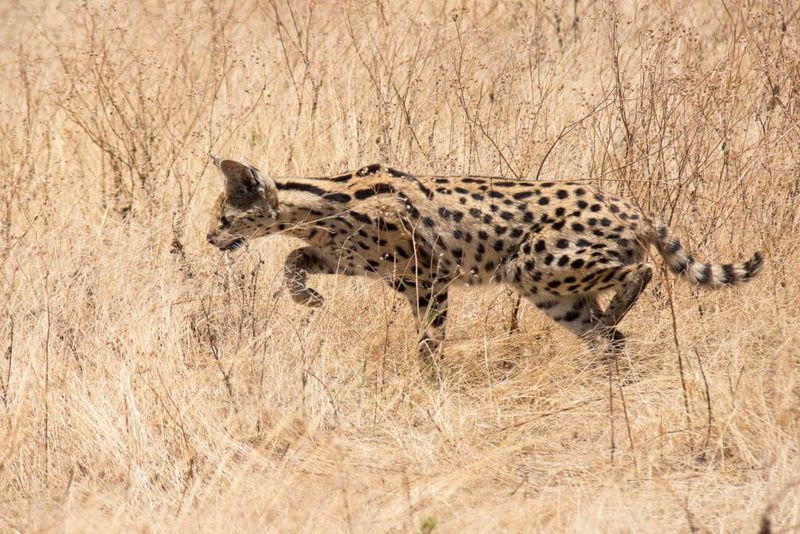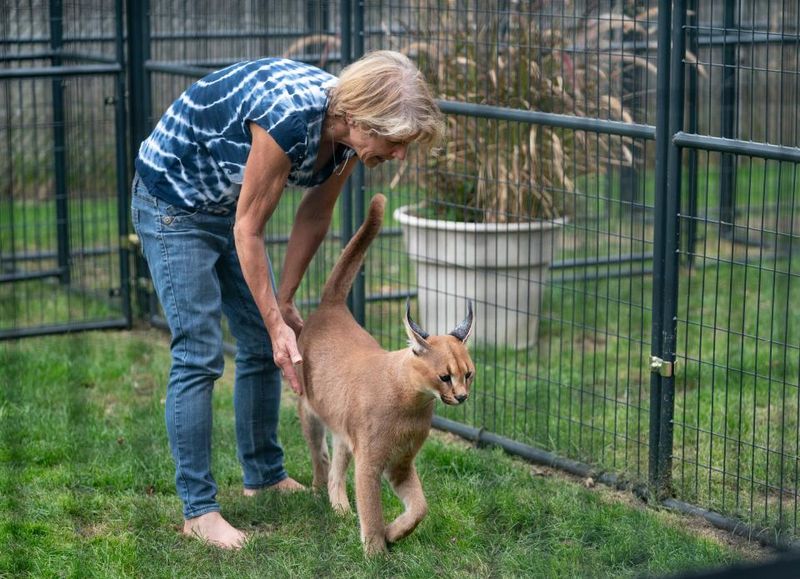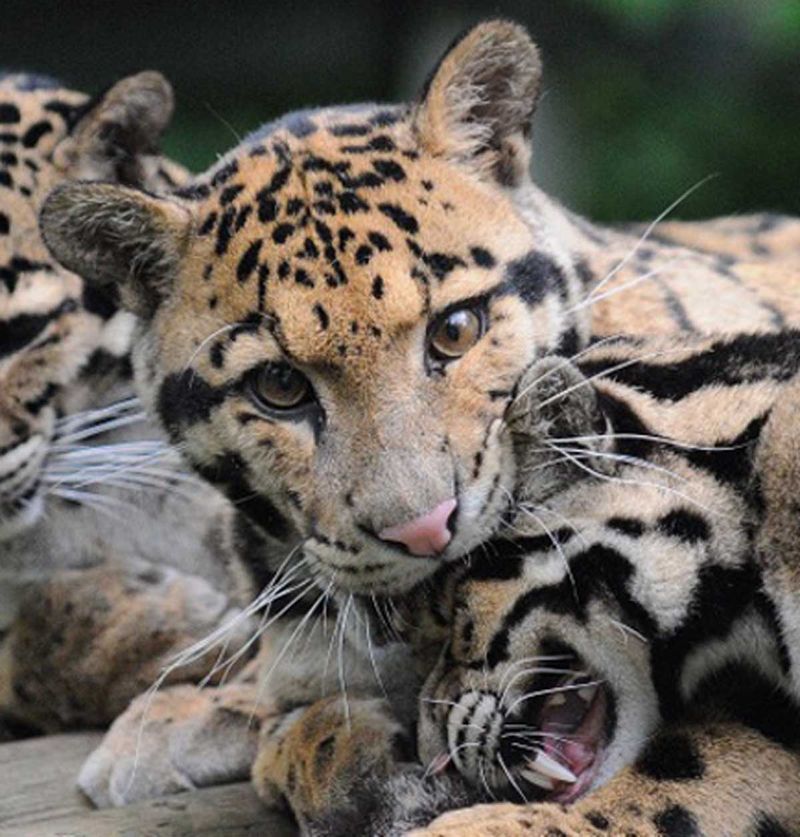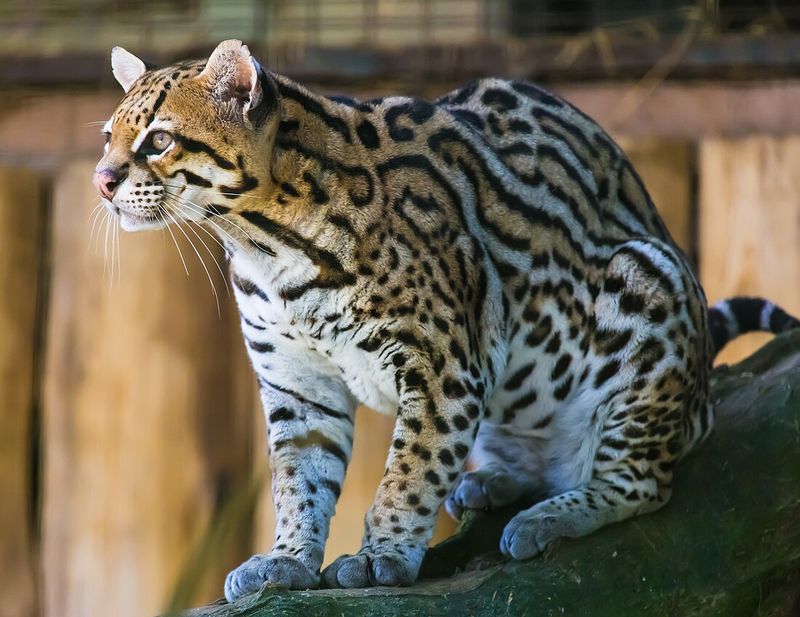📖 Table of Content:
House cats are often seen as the epitome of affectionate companionship in the animal world. Their gentle purring, close cuddles, and playful nature make them beloved members of countless homes. Yet, affection and emotional depth are not exclusive to these smaller felines.
Larger wild cats, despite their imposing presence, are also capable of forming deep and lasting bonds. From tigers to cougars, many exhibit behaviors that reflect strong social ties and loyalty. These connections can form with both humans and fellow animals, especially when trust is established over time.
Such examples challenge assumptions about wild animals being purely instinct-driven or solitary. Emotional complexity is evident in their gestures, vocalizations, and protective instincts. These bonds reveal a softer side to creatures often defined solely by strength and survival.
1. Lions
Lions are the only truly social big cats, living in family groups called prides. Their strong bonds extend beyond survival instincts. Female lions stay together for life, raising cubs collectively and defending territory as a unified team.
Male lions, despite their fierce reputation, show remarkable gentleness with their cubs. They’ll allow youngsters to climb on them, pull their manes, and engage in play without showing aggression.
In captivity, lions often form deep connections with caretakers who’ve raised them from cubhood. They express affection through head rubbing, purring, and seeking physical contact – behaviors remarkably similar to house cats.
2. Tigers
Normally solitary in the wild, tigers reveal a surprising capacity for companionship under certain circumstances. Conservation experts have documented cases where tigers form lasting friendships with other tigers or even different species when raised together from a young age.
Their remarkable memory allows tigers to recognize human caretakers after years of separation. Several wildlife sanctuaries report tigers displaying excitement upon reuniting with handlers who raised them as cubs.
Mother tigers exemplify dedication, spending up to three years raising and teaching their young. This extended parental investment creates powerful maternal bonds rarely seen in other big cats.
3. Cheetahs
Few friendships in the animal world are as heartwarming as those between cheetahs and dogs. Zoos often introduce puppies to cheetah cubs to offer comfort and companionship during early development. The result is a strong, lasting bond that often endures for life.
Male cheetahs frequently establish lifelong coalitions with brothers or unrelated males. They hunt together, defend territory as a unit, and even raise cubs cooperatively in some cases.
Cheetah mothers invest tremendous energy in teaching cubs hunting skills. The educational bond lasts 18-22 months – longer than most big cats – creating deep connections that occasionally continue into adulthood when territories overlap.
4. Leopards
Though leopards are classified as solitary animals, their maternal behavior reveals social depth. Females invest significant time—often up to two years—raising cubs and honing their survival instincts. Key techniques, like stashing kills in treetops, are essential for their long-term success.
Research reveals leopards maintain loose social networks in the wild. They recognize and avoid conflict with neighboring leopards they’ve known since youth, suggesting long-term social memory and recognition.
Orphaned leopards raised by humans show remarkable ability to form cross-species attachments. Conservation programs report leopards displaying affection toward caretakers through vocalizations, body language, and seeking physical contact – similar to how domestic cats show love.
5. Cougars
In the wild, cougars reveal a hidden layer of social connection through their female relatives. Sisters often settle near each other, forming quiet family clusters across the landscape. At times, they even join forces to hunt or care for their young.
Mother cougars invest heavily in offspring development. They spend up to two years teaching cubs sophisticated hunting techniques specific to their territory’s prey animals and geography.
Rescued cougars demonstrate a remarkable capacity for human bonding. Wildlife rehabilitators report cases where injured cougars form trusting relationships with caregivers, recognizing them individually and showing distinct preferences. Their purrs, head-butts, and slow blinks mirror domestic cat affection signals.
6. Jaguars
Jaguars combine fierce independence with surprising capacity for companionship. Female jaguars maintain the longest maternal bonds among big cats, with cubs staying under their mother’s guidance for up to two years, learning specialized hunting techniques.
Ancient Mayan and Aztec civilizations kept jaguars as companions, not just symbols of power. Historical records describe jaguars forming deep connections with specific handlers, responding to commands, and displaying affection.
Conservation researchers have documented jaguar pairs maintaining friendly relationships in overlapping territories. They share hunting grounds without conflict and occasionally travel together, suggesting social bonds beyond breeding season – behavior previously thought impossible for this species.
7. Lynx
Even after growing up, lynx siblings rarely go their separate ways completely. Many settle in adjoining territories and continue to visit each other regularly. In the bitter cold of winter, they sometimes reunite to hunt together, strengthening both their bond and survival odds.
These medium-sized wildcats form particularly strong mother-daughter bonds. Female lynx frequently allow adult daughters to share territory and hunting grounds, creating multi-generational family units rarely seen in other wild cats.
Hand-raised lynx show remarkable affinity for their human caregivers. Wildlife rehabilitation centers report lynx remembering specific handlers after years of separation, greeting them with distinctive vocalizations and seeking physical contact through head-rubbing and gentle paw touches.
8. Servals
Among the tall grasses of Africa, servals forge quiet connections through sound. With over 20 different vocal calls, they share their moods and meanings with trusted companions. This layered communication helps deepen their relationships in the wild.
Mother servals invest exceptional time teaching hunting skills. They demonstrate the famous serval leap – jumping up to 12 feet high to catch birds – through hundreds of repetitions until cubs master the technique.
In managed care environments, servals form lasting attachments to specific caretakers. They greet preferred humans with unique chirping sounds reserved only for their closest companions and show excitement through a distinctive bouncing gait when reunited after separations.
9. Caracals
Caracals excel at forming cross-species friendships when raised in conservation settings. These medium-sized desert cats have been documented bonding with everything from domestic dogs to cheetahs when introduced during their developmental period.
Their exceptional intelligence allows caracals to recognize and remember human caretakers for years. Wildlife sanctuaries report caracals greeting returning staff with distinctive ear movements and vocalizations specific to preferred individuals.
Mother caracals create teaching environments for their kittens. They bring live prey back to dens, releasing it in controlled settings where young can practice hunting skills, demonstrating remarkable patience during this educational bonding period.
10. Clouded Leopards
In the quiet shadows of the forest, clouded leopards find comfort in one another. Raised together from youth, some pairs form unbreakable bonds, sharing warmth and gentle care. Solitude becomes softened by a lifelong companion.
These medium-sized Asian cats show extraordinary attachment to trusted humans. Conservation centers report clouded leopards recognizing specific caretakers by scent alone and displaying greeting behaviors unique to each person.
Their exceptional memory allows clouded leopards to maintain relationships despite separation. Multiple facilities document cases where these cats immediately recognized handlers after years apart, resuming affectionate behaviors as if no time had passed.
11. Ocelots
Despite being classified as solitary felines, ocelots exhibit complex social structures in their natural habitat. Research indicates they can identify and remember numerous individuals, often altering behavior depending on previous encounters. This flexible social strategy supports peaceful coexistence and territory sharing.
Mother ocelots create educational playgrounds for kittens. They modify their territory to include varied hunting opportunities – from bird-rich trees to rodent-heavy underbrush – creating a comprehensive training environment during the 18-month maturation period.
Hand-raised ocelots develop deep human attachments. Conservation programs document ocelots seeking physical contact with trusted caretakers, bringing them “gifts” of toys or prey items, and displaying distress during separations – behaviors remarkably similar to domestic cat bonding.

